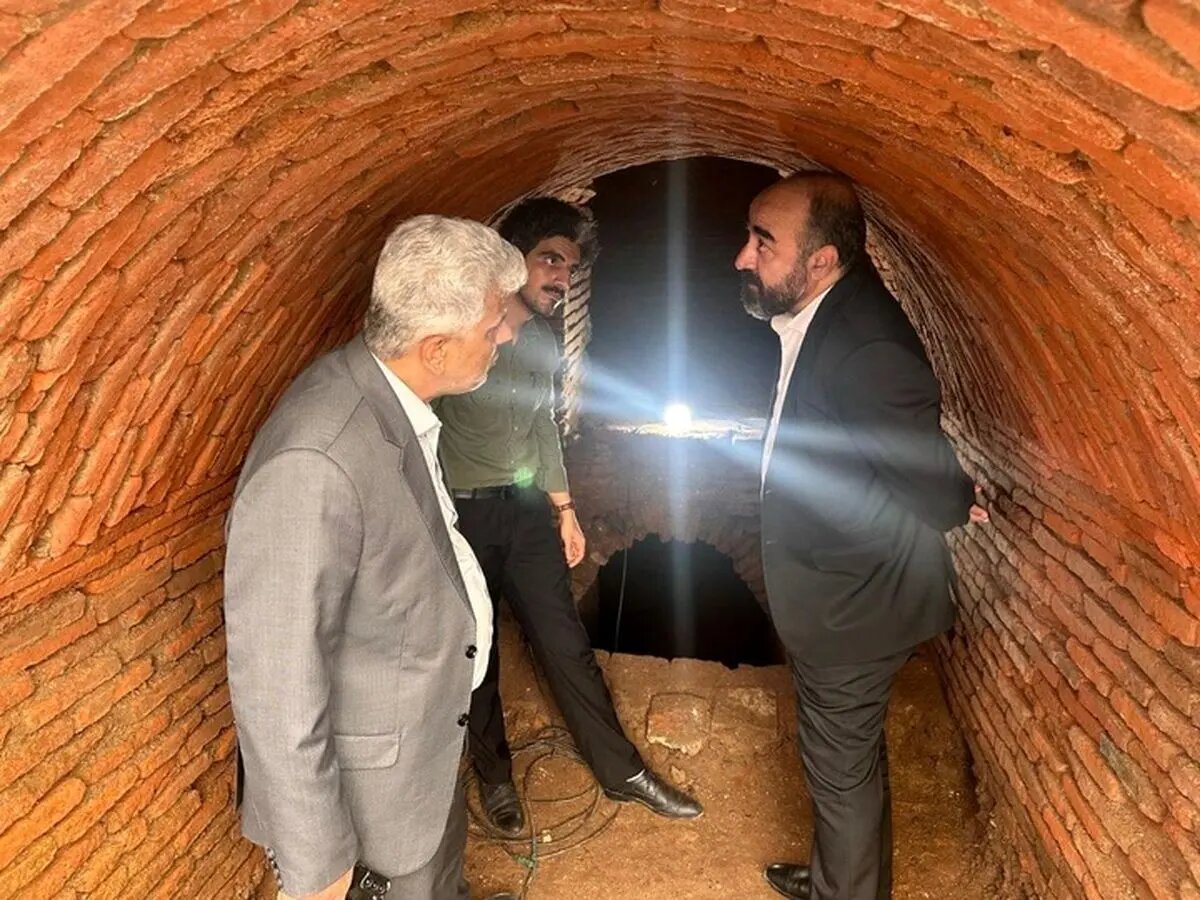Restoration work yields discovery of ancient cellar in Rasht

Alireza Yazdani Sangari, who leads the restoration project, announced that a remarkably well-preserved brick cellar, dating back to the early Islamic eras, was unearthed outside the shrine of Fatemeh Okhra, the sister of Imam Reza (AS), the eighth Shia Imam, ILNA reported on Saturday.
“During the restoration of the shrine's western courtyard, workers discovered a brick-constructed tunnel-like structure. Initial observations suggested that the tunnel was ancient, a theory supported by the presence of scattered human bones within the vicinity.”
The discovery prompted immediate cessation of construction activities, pending further archaeological investigation, the report said.
The revealed structure comprises a corridor with a vaulted ceiling, constructed from bricks and clay mortar, leading to a two-story cellar with arched ceilings. Both levels of the cellar contained human skeletal remains.
Yazdani Sangari noted that the rooms measured 280 cm in length, 210 cm in width, and 210 cm in height. Due to rainwater infiltration and high humidity, the bones in the upper room were less preserved compared to those in the lower room, which had been sealed with dry-laid bricks.
Currently, the exact historical context and the events leading to the accumulation of these bones remain unclear.
Yazdani Sangari emphasized that more fieldwork and various tests are necessary to ascertain the full historical significance of the findings. Despite this, he highlighted that the structure is one of the finest examples of early Islamic cellars in Gilan province.
The shrine, situated in the historical neighborhood of Saghari-Sazan in central Rasht, has long been a site of reverence. This area is known for retaining much of its traditional architecture, with old houses, bathhouses, and shops still visible in its narrow alleyways, Yazdani Sangari explained.
Following the discovery, Mustafa Dehpahlavan, head of the Research Institute of Cultural Heritage and Tourism, and Vali Jahani, director general of Cultural Heritage, Tourism and Handicrafts of Gilan, visited the site.
The Gilan region was within the sphere of influence of the successive Achaemenian, Seleucid, Parthian, and Sasanian empires that ruled Iran until the 7th century CE. The subsequent Arab conquest of Iran led to the rise of many local dynasties, and Gilan acquired an independent status that continued until 1567.
Gilan is known for its tourist attractions and warm-hearted and hospitable people. The people of Gilan from different ethnic groups, including Gilak, Talesh, and Tat, have come together and formed a very rich and diverse culture and customs.
The touristic province offers plenty of activities for tourists. Hiking and trekking in the mountains, birdwatching in the lagoons, camping near the waterfalls and rivers, and sightseeing in the beautiful natural scenery are all popular activities for visitors.
AM
Leave a Comment